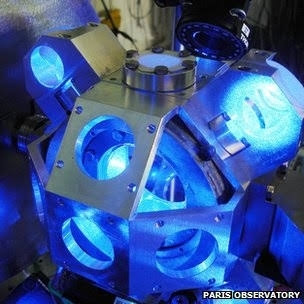Time is very important factor for everyone. Sometimes a few seconds is a lot time to reach the milestone. Time is a storm in which we all are lost. So first of all let us know the standard unit of time and its defenition. The SI unit of time is second. But what is '1 second'? The second is the duration of 9,192,631,770 periods of the radiation corresponding to the transition between the two hyperfine levels of the ground state of the caesium-133 atom. There are many devices to measure time. In earlier times, Sand clocks, water clocks and Sun dials were used. Now we have quartz watches, atomic clock, smart watch etc. But the most accurate of all the clocks is Optical Lattice Clock.
Optical Lattice Clock is designed by Jérôme Lodewyck and his team at the Paris observatory. It is the most accurate clock and could 'redefine the second'. The cesium fountain clock operate about 1x10^-16 relative precision whereas optical atomic clock has a relative precision of 2.5x10^-19. It is accurate to within 1 minute every 18,000 million years. It uses laser beams and interference phenomena. Like, it is formed by the interference pattern of two laser light beams that are propagating in precisely opposite directions through the same medium. A laser is used to excite, high-frequency transition in the strontium atom to reach upto a standard frequency that provides extremely precise measurment of time.
The new clock is located at the National Institute of Standards and Technology (NIST)
in Boulder, Colorado, USA. "An inch of time is an inch of gold but you can't buy that inch of time with an inch of gold". Therefore we should have clock which measures time with the highest precision and now we have one!




No comments:
Post a Comment